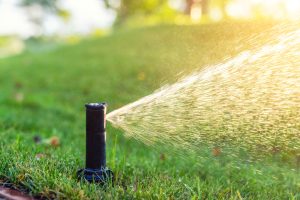 Maintaining a healthy lawn involves striking the right balance in your watering routine. While it’s crucial to keep it hydrated, overwatering your lawn can lead to a host of problems that can damage the grass and waste valuable resources. Understanding the signs of overwatering, why it’s harmful, and how to water efficiently can help you achieve a lush, green lawn without the pitfalls of excessive watering.
Maintaining a healthy lawn involves striking the right balance in your watering routine. While it’s crucial to keep it hydrated, overwatering your lawn can lead to a host of problems that can damage the grass and waste valuable resources. Understanding the signs of overwatering, why it’s harmful, and how to water efficiently can help you achieve a lush, green lawn without the pitfalls of excessive watering.
Signs of Overwatering
- Soggy Soil: This is one of the most evident signs of overwatering. If your lawn feels spongy underfoot or you notice standing water, it’s a clear indication that you’re applying too much water.
- Yellowing Grass: Overwatered grass often turns yellow instead of maintaining a healthy green hue. This happens because the roots are deprived of oxygen, causing the grass to suffocate and lose its color.
- Fungal Growth: Excess moisture creates an ideal environment for fungal growth. If you notice mushrooms, mold, or other fungal patches, overwatering could be the culprit.
- Increased Weed Growth: Certain weeds, like crabgrass and nutsedge, thrive in overly moist conditions. Look out for an uptick in these types of weeds.
- Shallow Root System: Overwatering encourages shallow root growth because the grass doesn’t need to extend its roots deep into the soil to find water. This makes the lawn more susceptible to drought and other stressors.
Why Overwatering Your Lawn Is Harmful
There are several ways in which overwatering can contribute to poor lawn health. Excess moisture promotes disease by fostering the growth of root rot and various fungal infections. Additionally, consistent overwatering can lead to soil compaction, which reduces the soil’s ability to absorb water and nutrients; it may also cause essential nutrients to be washed away before the grass roots have a chance to absorb them.
Overwatering is not only harmful to your lawn—it’s also wasteful. It increases water bills and depletes local water resources, which is especially concerning in areas prone to drought.
How to Water Efficiently
The following tips will help you avoid overwatering your lawn.
- Monitor Soil Moisture: Use a soil moisture meter or simply dig a small hole to check the moisture level. Water only when the top 1-2 inches of soil are dry.
- Water Deeply and Infrequently: Instead of watering a little bit every day, water deeply and less frequently. This encourages deeper root growth, making your lawn more drought resistant.
- Time it Right: Water your lawn early in the morning when temperatures are cooler. This reduces evaporation and allows the grass to dry before nightfall, minimizing the risk of disease.
- Use the Right Tools: Invest in a sprinkler system with adjustable settings or a soaker hose to ensure even water distribution. Consider using a rain sensor or a smart irrigation controller to prevent watering when it’s not necessary.
- Aerate Your Lawn: Aeration improves soil drainage and reduces soil compaction, helping water reach the roots more effectively.
Proper watering is essential for a healthy lawn, but as you now know, more water doesn’t always mean better results. By recognizing the signs of overwatering, understanding its harmful effects, and adopting efficient watering practices, you can maintain a vibrant and resilient lawn. For all your irrigation and lawn care needs, contact Dolan Landscaping. Our team of professionals is here to help you achieve the perfect balance for a beautiful, thriving lawn.